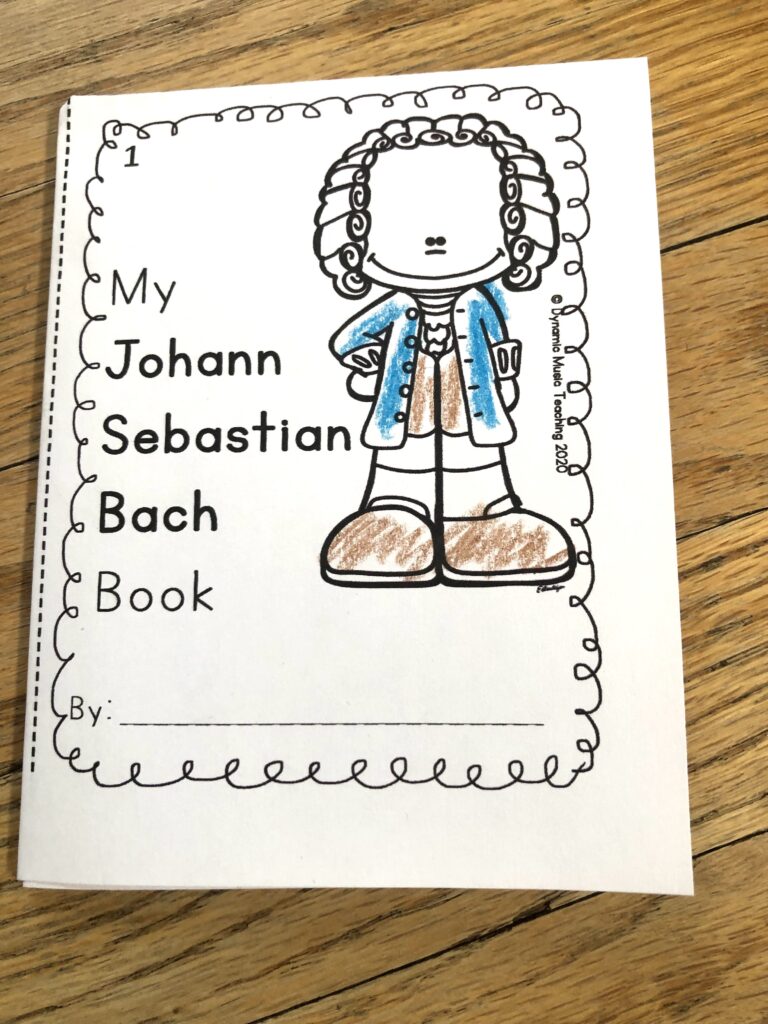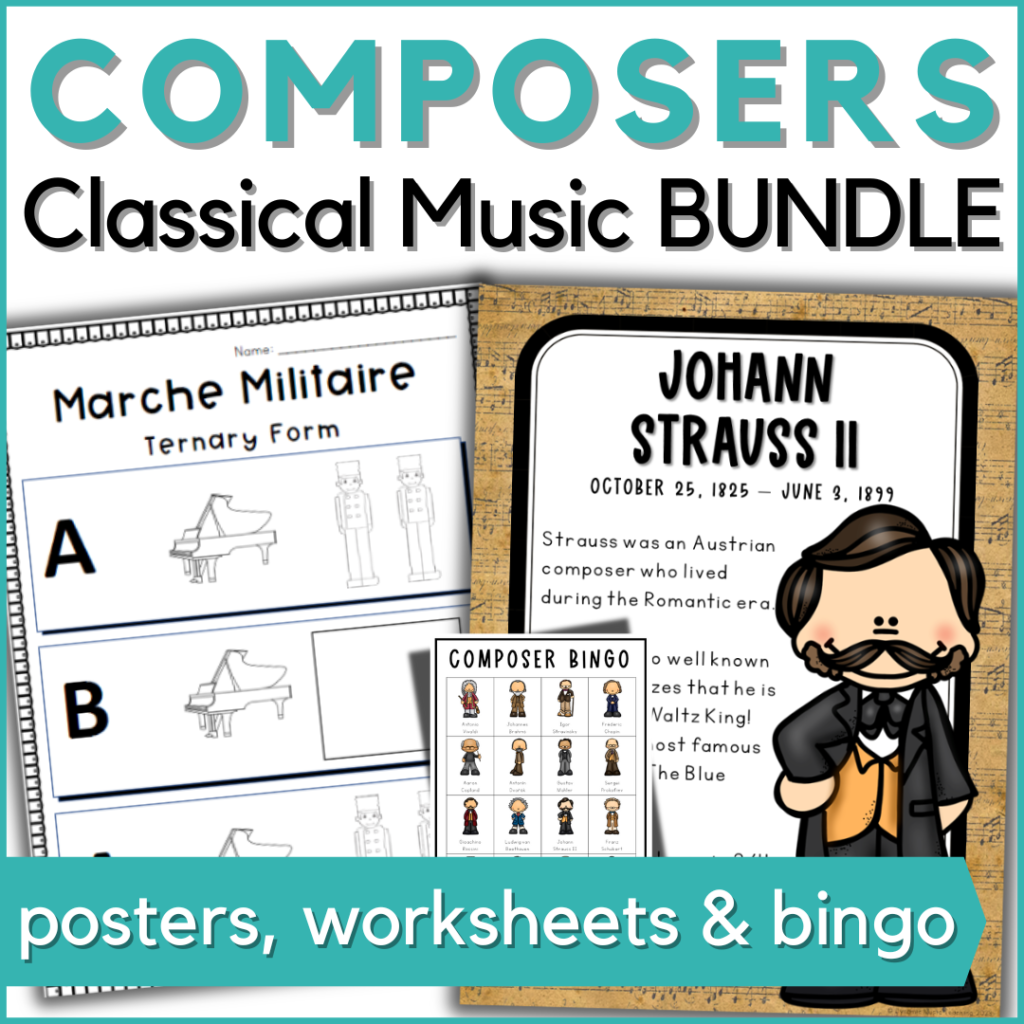Do you teach your students about classical composers? No matter what genre of music your students play or learn about, it’s invaluable to introduce them to the musicians who composed their music! It doesn’t have to take long—in fact, even if you only have 30 minutes once a week, you can still benefit from some of these ideas as short take-home assignments, displays on your bulletin board or wall, or activities in your waiting area.
What I Include in Every Lesson About a Composer
A Short Biography or Story About the Composer
Kids love listening to stories. Learning about when, where, and how a composer lived instantly makes the topic more engaging and provides context for their music. Check out your local library for storybooks about great composers, or try short biographies like the ones in my composer lesson sets.
Tip: If you’re short on time, leave books or printed biographies about composers in a waiting area, or create a display on the wall or bulletin board outside your room. You’d be surprised how much students absorb this way! One of my young students learned all the music symbols off of a blanket I have in my waiting area!
[Get a free sample from my worksheet set on J.S. Bach.]

Listen to the Composer’s Music
After learning a bit about the composer, listen to some of their music. If your students are playing music by the composer, listen to those pieces. My favorite way to get kids to actively listen is with listening glyphs.
Listening glyphs are essentially coloring sheets that ask students to color a picture according to what they hear in the music. For example, if the music is forte, you might be asked to color the dog brown, but if it is piano, you would color the dog black. Or, if you hear staccato sounds, you might color an apple red, but if you hear legato sounds, you would color it green. Kids love coloring, and this activity usually gets even the most reluctant listeners actively listening to different elements of the music.
Another engaging way to get your students listening to classical music and learning about the composers is by playing composer bingo. Play a variety of excerpts by different composers, calling their name after the music—if you have older students, maybe they can guess some of the composers when you play their music.
Reflect/Write
Take the opportunity to let your students reflect on the composer, whether that be their life or their music.
- Did they enjoy it? Why or why not?
- What did it make them imagine?
- How did it make them feel? Why?
- What would they like to ask the composer if they could meet him/her?
Give your students a writing prompt such as one of these to reflect on, or have a discussion.
What to Include in a Composer Music Lesson:
- Their story (reading)
- Their music (active listening)
- Reflection (writing or discussion)

Short on time? This bundle of elementary lessons and activities about classical composers for kids is perfect for you! It includes everything we talked about above, ready to print and go for you:
- 8 Composer study worksheet sets (each with a foldable booklet, short biography, and more!)
- Set of 24 composer posters for your wall, with accompanying worksheets.
- Listening glyphs & worksheets for 24 famous classical pieces (in 3 versions each, so you can use them with multiple levels)
- 50 Composer bingo cards (in both color and black & white)


